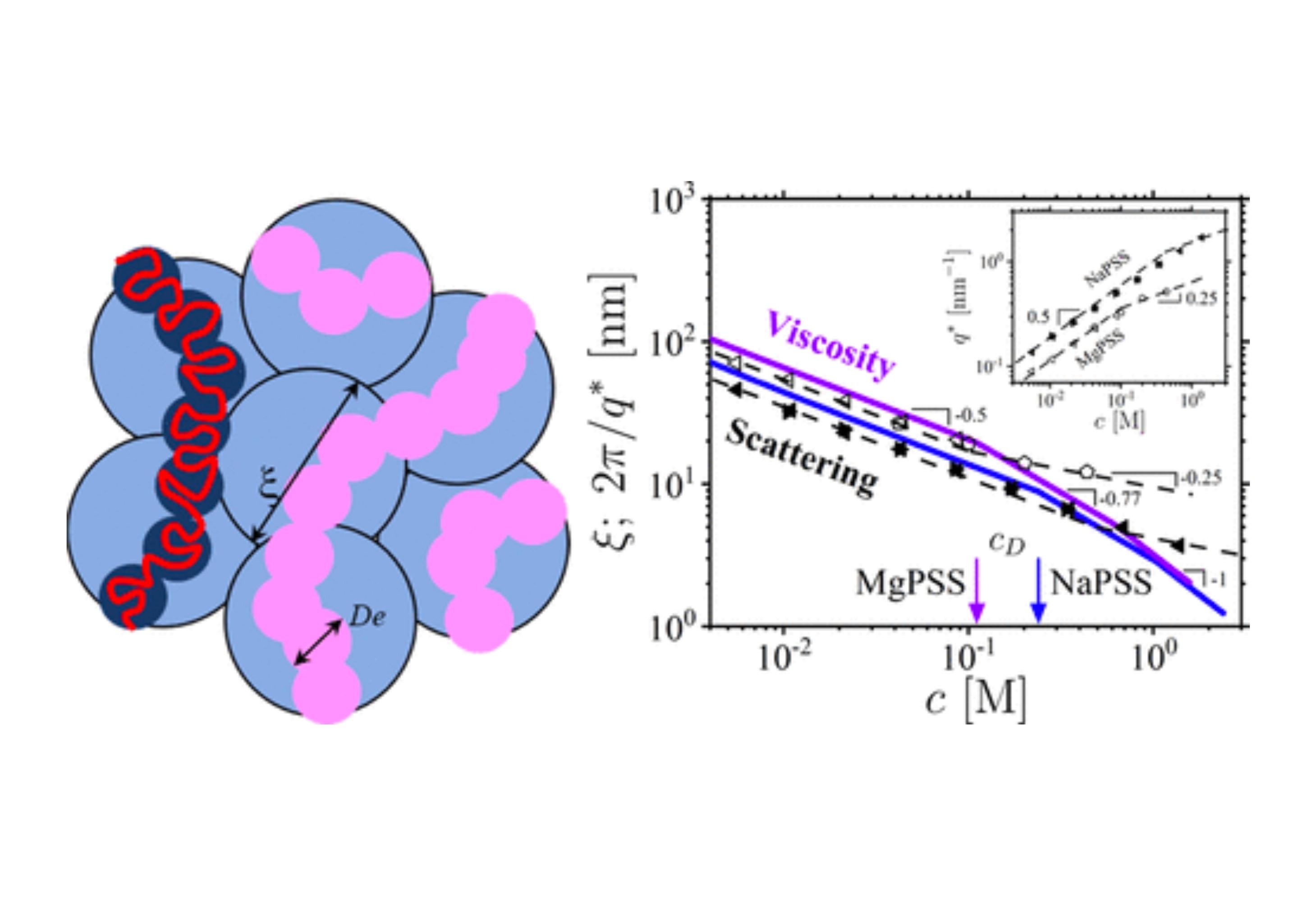Quantifying the Effect of Multivalent Ions in Polyelectrolyte Solutions
Abstract
We implemented a scaling approach, based on the relationship between the solution correlation length ξ = lgν/B and the number of repeat units per correlation blob g for polymers with repeat unit projection length l, to quantify properties of solutions of carboxymethylcellulose and polystyrene sulfonate with monovalent and divalent counterions. The parameter B is equal to Bpe, Bg, Bth, and 1, and the exponent v = 1, 0.588, 0.5, and 1 in semidilute polyelectrolyte solutions, solutions of overlapping electrostatic and thermal blobs, and concentrated polymer solutions, which are separated by crossover concentrations cD, cth, and c**, respectively. The values of the B-parameters are obtained using the linear relationship between the specific viscosity ηsp(c) in the unentangled solution regime and the number of correlation blobs Nw/g per chain, with the weight-average degree of polymerization, Nw, and g = B3/(3ν–1)(cl3)1/(1–3ν) as a function of the repeat unit concentration, c, and the B-parameters in different solution regimes. This analysis shows that (i) there is only a small fraction of free counterions, f* < 12%; (ii) divalent ions have a strong effect on the renormalization of the excluded volume, reducing it by a factor of 2; and (iii) the effect of divalent counterions is much weaker on the renormalization of the Kuhn length, accounting for an increase of up to 10%. In combination, these effects significantly reduce chain stretching, increase the number of repeat units per solution correlation length, and promote chain disentanglement in polyelectrolyte solutions with divalent ions in comparison with that in solutions with monovalent counterions. There is an indication of chain bridging by Ca2+ ions in concentrated solutions of carboxymethylcellulose, manifested as an increase in solution viscosity. The concentration dependence of the solution correlation length ξ calculated using the set of B-parameters is in good agreement with that obtained from the peak position of the scattering function for concentrations c < cD.
Citation
Quantifying the Effect of Multivalent Ions in Polyelectrolyte Solutions
Michael Jacobs, Carlos G. Lopez, and Andrey V. Dobrynin
Macromolecules 2021 54 (20), 9577-9586
DOI: 10.1021/acs.macromol.1c01326


